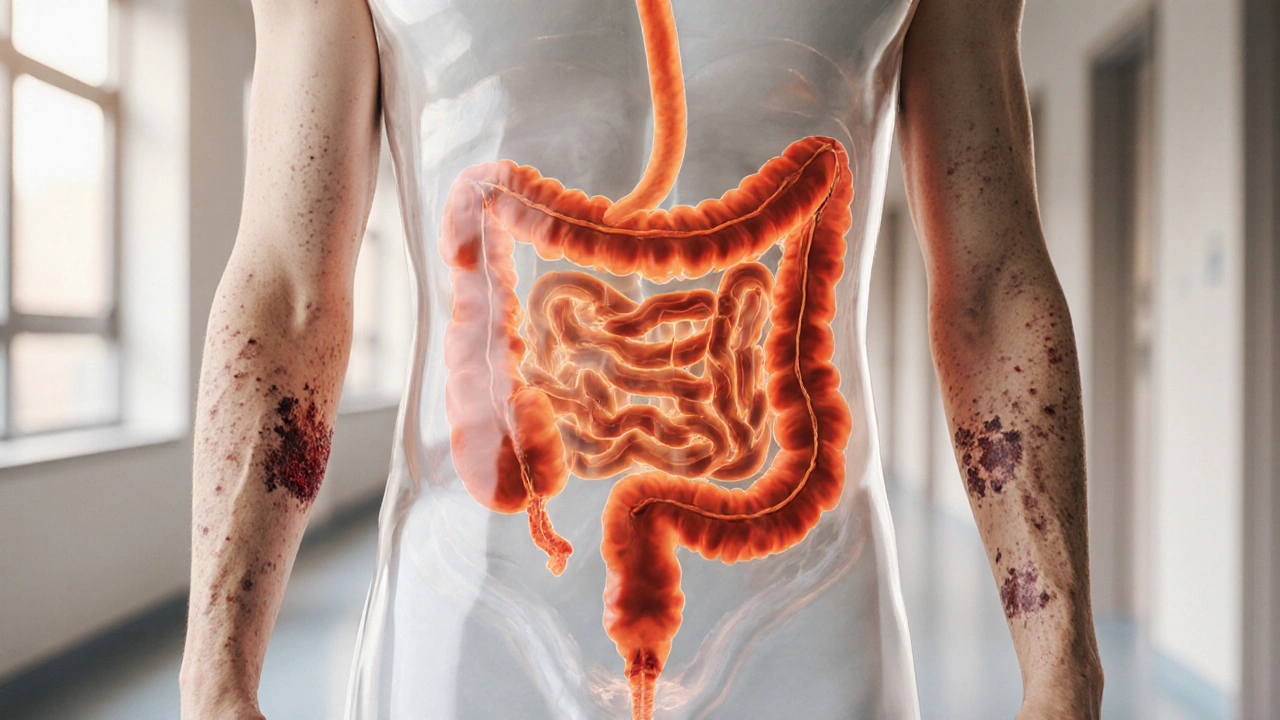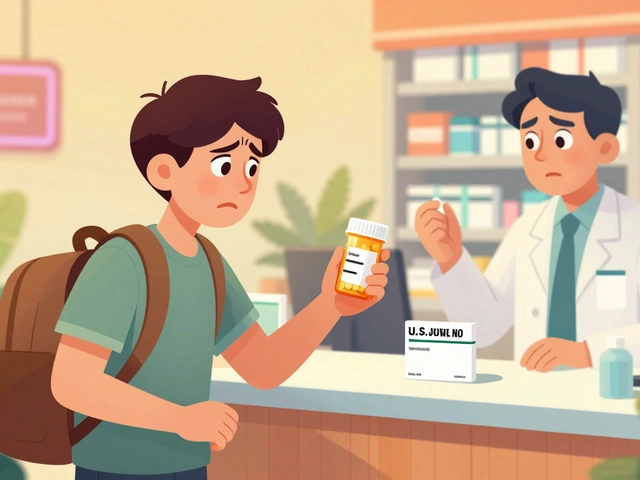erythema nodosum IBD
When dealing with erythema nodosum IBD, the tender red nodules that often appear on the shins of patients with inflammatory bowel disease (IBD). Also known as EN‑IBD, it signals an immune‑driven skin reaction tied to gut inflammation. This condition sits at the intersection of erythema nodosum, a type of panniculitis that causes painful subcutaneous nodules and inflammatory bowel disease, a chronic disorder that includes Crohn’s disease and ulcerative colitis. Understanding how these entities interact helps clinicians spot a flare early and choose the right therapy.
Key Connections
Crohn's disease, a segmental, transmural inflammation that can affect any part of the gastrointestinal tract often produces extra‑intestinal signs like EN‑IBD. Ulcerative colitis, a continuous mucosal inflammation limited to the colon and rectum follows a similar pattern, with skin lesions that may precede bowel symptoms. Both forms trigger cytokine release—especially TNF‑α and interleukin‑1—that fuels the panniculitis seen in erythema nodosum. Recognizing this cytokine link lets doctors consider systemic therapies (e.g., biologics) that treat both gut and skin.
The articles below dive deep into the practical side of managing erythema nodosum IBD. You’ll find pieces on how specific drugs—like anti‑TNF agents, corticosteroids, and newer small‑molecule therapies—affect skin and gut health, step‑by‑step guides for diagnosing the condition, and lifestyle tips that can ease symptoms. Whether you’re a patient looking for clear advice or a clinician seeking up‑to‑date references, this collection gives you the tools to understand the link between the skin and the intestine and to act on it confidently. Keep reading to explore the full range of information we’ve gathered on this crossover condition.
Explore why ulcerative colitis often triggers skin issues like pyoderma gangrenosum and psoriasis, learn the immune link, and get practical tips for treatment and care.



